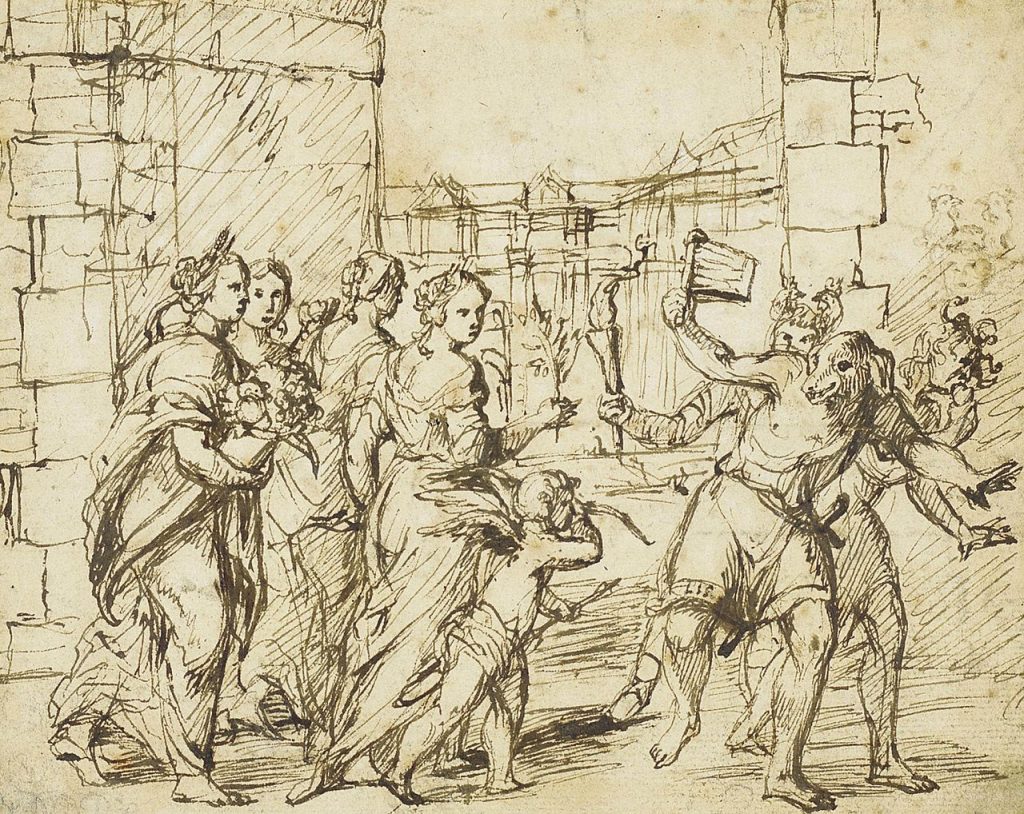Hungarian traditions and superstitions on Saint Valentine’s Day

Love is in the air… especially today when Christian countries celebrate Saint Valentine’s Day on every February 14. This is the day when we surprise the person we love with flowers, chocolate or a romantic outing. The lesser known fact might be that in Hungarian villages there were traditions and superstitions related to this day from the 19th century. But first, let’s step back in time to 269 in the Roman Empire.
History of Saint Valentine’s Day
In the ancient Roman Empire back in the 3d century there were two major religious celebrations between February 13-15. The festival of Faunus and Lupercalia or Februa. These celebrations consisted of rituals and ceremonies to conciliate the wolf-shaped and evil Lupercus, the god of evil spirits and the wolf which fed Romulus and Remus. Priests usually whipped women with belts made out of goat skin, because they believed that this ritual brings purification.
Besides these cruelties, there were enjoyable activities on this day as well. Young girls usually headed to the temple of Juno (goddess of childbirth and marriage) where they were given a ritual prophecy about their future partner and husband. Men usually gave their wives presents and flowers while the plebs (poor people) gathered together and held a tombola where they chose themselves maiden women. Historians believe that after a while they fell in love with each other and got married. The aristocracy despised this kind of tombola games.

And what is Valentine? Valentinus of Rome was a Christian priest who was executed and became a martyr on February 14, 269, during the celebration of the Lupercalia. The news of his execution spread across the city and after a while, people celebrated Lupercalia and commemorated the priest at the same time on the same day.
After a while, the romantic features of the Lupercalia and the commemoration of Saint Valentine became one celebration and Saint Valentine’s Day was born. Although many historians believe that this connection is false, many authors and experts claim that it is true.
Traditions and superstitions in Hungary
Saint Valentine’s Day in Hungary is called Valentin Nap or Bálint-nap. After the execution of Valentinus (Saint Bálint in Hungary), he became a saint in the 5th century and the protector of lovers, married couples, engaged couples, neurotics, and epileptics.
The commonly known Valentine’s Day – giving flowers, chocolate, etc. – is celebrated in Hungary since 1990. But, before it became a public celebration there were several traditions and superstitions related to Saint Bálint’s day.

On this day, the weather conditions were important because they could tell how lucky farmers would be when the spring comes and the amount of harvest they would have. Women usually put chickens on their eggs, men planted trees, cut fruit trees and started to breed the household animals.
February 14 was the day of birds because this day was loud of the singing of sparrows, and wild pigeons returned, which meant that spring is nearby.
According to Sándor Bálint, who is a Hungarian ethnographer, on this day residents of the villages cleaned every road and street to put cereals and dried fruits on them for these birds. In some parts of Hungary, farmers took a walk on their lands before the sun rose to frighten off birds that could damage their harvest. In Feketics (Hungarian populated village in Serbia) they believed that if the larks started to sing the weather would remain cold and frosty.

Of course, there are superstitions related to love on this day. Every young girl ate an apple with nine seeds and then they put these seeds into the boys’ pockets unaware. The superstition says that the boy who gets the nine seeds will fall in love with the girl who puts them in his pocket.
Girls also lightened matches and waited until it burns. The direction the match fell meant the arriving direction of a girl’s new lover. Also, they believed, that if a girl or a boy brings water from nine wells, and someone drinks it, that person would fall in love with him/her. Sweeping was not allowed for girls on this day, because if they broke this rule, they would not become married.
Giving presents was also popular on this day. In Kalotaszeg (Romania, Transylvania) lovers usually made each other a Kalotaszegi vetélő (flying shuttle), which was a traditional Saint Bálint’s Day gift in the 19th century.

Source: Wikipedia, www.pestpilis.hu





